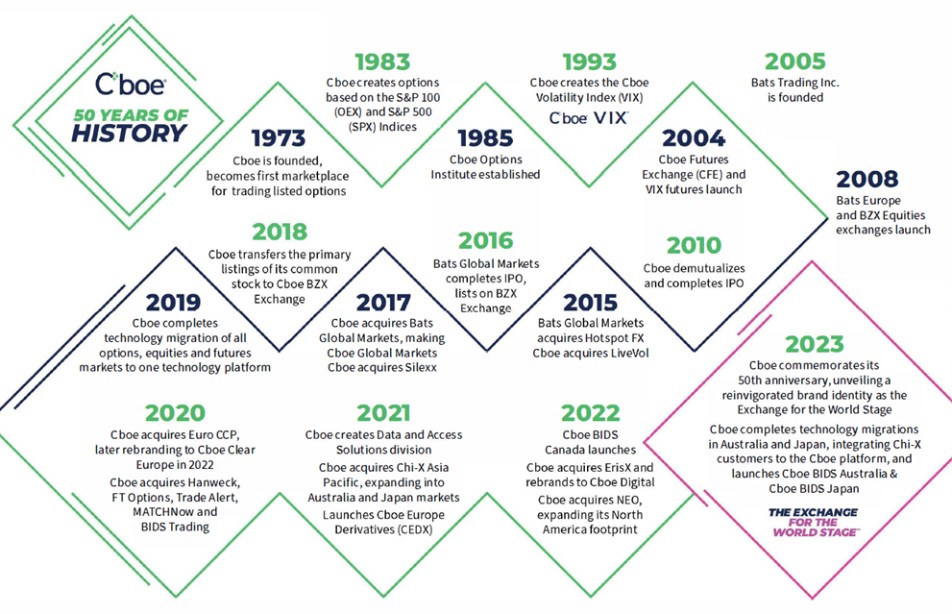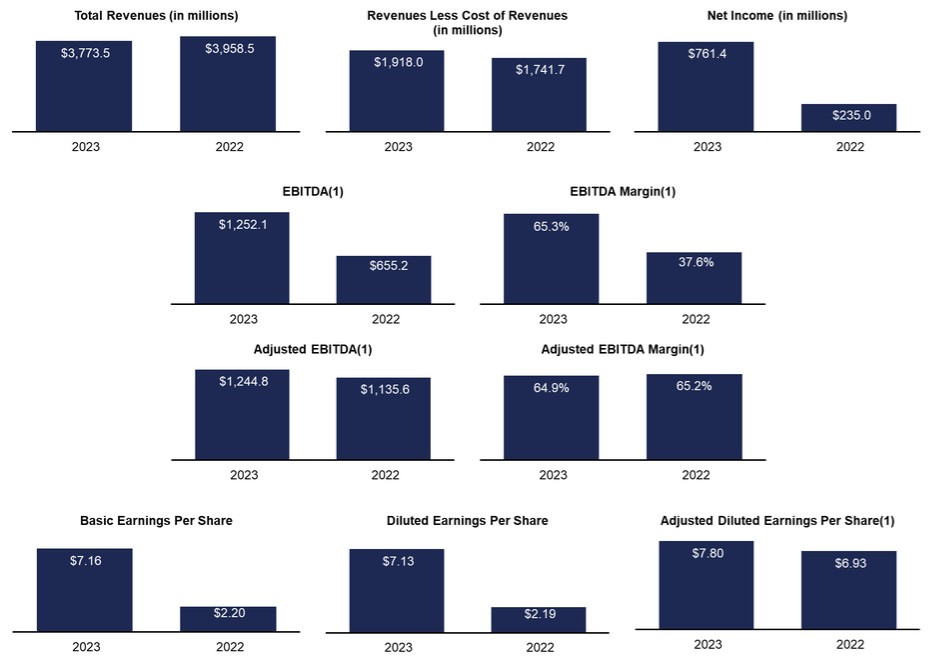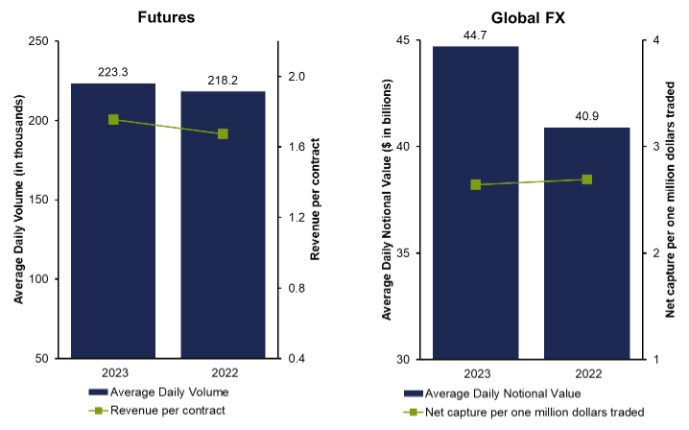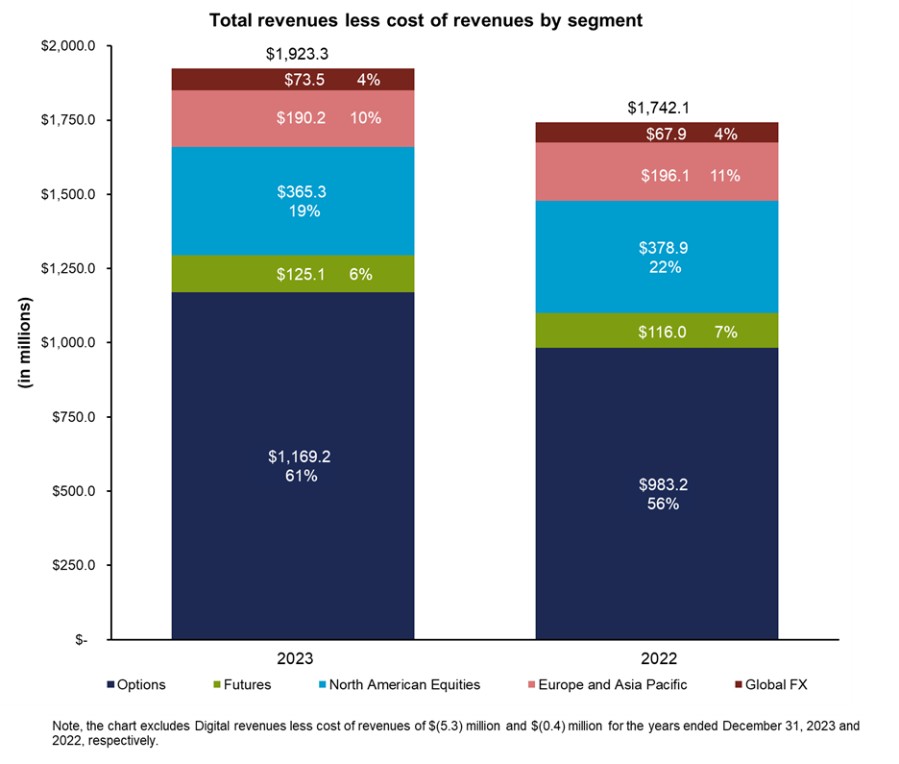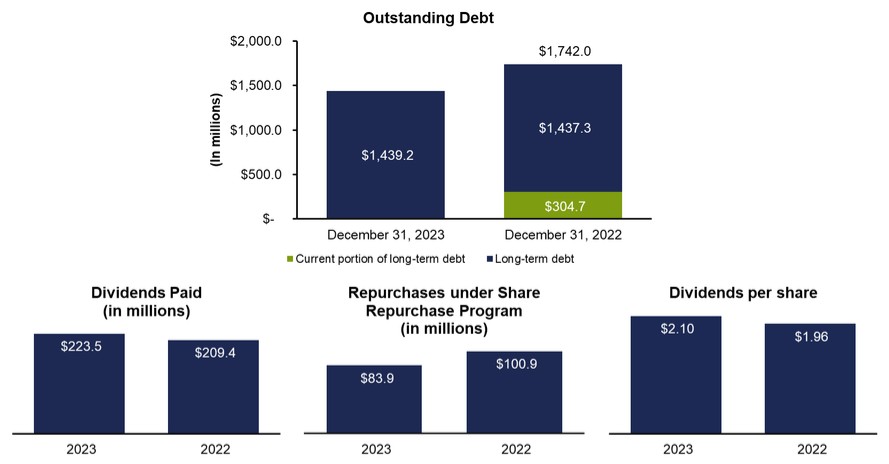holding company of alternative market operators in Australia and Japan, and in 2020, we purchased Hanweck and the assets of FT Options, which are providers of risk analytics market data, the assets of Trade Alert, a real-time alerts and order flow analysis service provider, Cboe Clear Europe, an operator of a European clearinghouse, and TriAct Canada Marketplace LP, which at the time was an operator of an equities ATS in Canada called MATCHNow. At the end of 2020, we also purchased BIDS Trading, a registered broker-dealer and operator of the BIDS ATS in the U.S., which is not a registered national securities exchange or a facility thereof. Cboe maintains the BIDS ATS as an independently managed and operated trading venue, separate from and not integrated with the Exchanges.
The process of integration, including in new geographies and asset classes with new regulatory regimes, may expose us to a number of unforeseen risks and operating difficulties, including risks relating to information technology migrations, integrations and security, regulatory issues, and other issues, and may divert the attention of management from the ongoing operation of our business and harm our reputation. We may not successfully achieve the integration objectives, and we may not realize the anticipated cost savings, revenue growth and synergies in full or at all, or it may take longer to realize them than expected, any of which could negatively impact our business, financial condition and operating results.
Further, the success of acquisitions, integrations, and future operations may also depend in part on our ability to retain following acquisitions key employees of acquired companies or find suitable candidates to replace such key employees who leave. If we are unable to retain such key employees, including management, we could face disruptions in our operations, integrations, loss of customers, loss of key information, expertise or know-how, and unanticipated additional recruitment costs.
For additional risks related to our Cboe Digital acquisition, see the Risk Factors Section entitled “Risks Relating to Our Cboe Digital Business” below.
A pandemic, such as the COVID-19 pandemic, and its effects may have significant impacts on economies around the world. Impacts of a pandemic could also have a material adverse effect on our business, financial condition, operating results and cash flows.
A pandemic, such as the COVID-19 pandemic, may have significant impacts on economies around the world. Governments, public institutions, and other organizations around the world may take or reimpose previous, emergency measures to combat a potential pandemic, including vaccination requirements, implementation of travel bans, stay-at-home orders, border closures, and closures of offices, factories, schools, public buildings and businesses. These measures may disrupt the supply chain and may interfere with the ability of our employees, vendors, technology equipment suppliers, data and disaster recovery centers, and other service providers to perform their respective responsibilities and obligations relative to the conduct of our business. In addition to uncertain expenses and impacts to our business we may incur due to a pandemic as part of us providing a safe and healthy work and trading environment, employees working remotely from different locations and in connection with our return to our offices, we may also be subject to claims from employees or customers alleging failure to maintain safe premises and restrictions with respect to protocols relating to such pandemic. Further, changes in trading behavior, impacts to trading behavior due to market disruptions, temporary suspensions of open outcry trading, temporary regulatory measures and other future developments caused by the effects of a pandemic, including a re-occurrence of cases and the emergence of variants, could impact trading volumes and the demand for our products, market data and services, which could have a material adverse effect on our business, financial condition, operating results and cash flows and could heighten many of the other risks described herein.
Risks Relating to Legal and Regulatory Matters
We operate in a highly regulated industry and may be subject to censures, fines and other legal proceedings if we fail to comply with legal and regulatory obligations.
Cboe Options, C2, BZX, BYX, EDGX, and EDGA are registered national securities exchanges and SROs, and, as such, are subject to comprehensive regulation by the SEC. CFE is a DCM and Cboe SEF is a SEF, each registered with the CFTC and subject to comprehensive regulation by the CFTC. In addition to its other SRO responsibilities, BZX, as a listing market, also is responsible for evaluating applications submitted by issuers interested in listing their securities on BZX and monitoring each issuer’s compliance with BZX’s continued listing standards. The Exchanges may be subject to additional responsibilities in other international jurisdictions where the Exchanges may be authorized to act as foreign exchanges. Failure to comply with these SRO and other responsibilities could result in potential sanctions or fines and a negative impact on Cboe’s reputation and/or branding.
